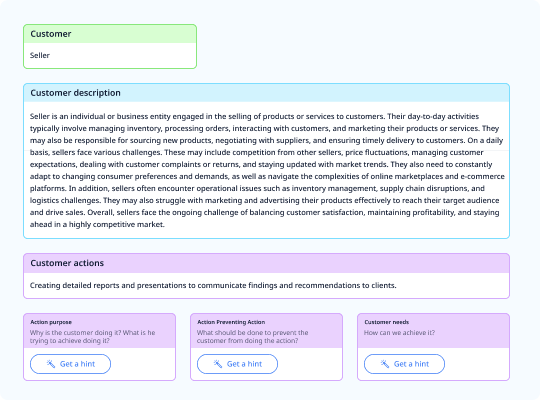creative tool

Action Preventing Action (APA) is a powerful creative thinking tool that is useful for defining customer requirements. Meeting customer needs is a crucial step in driving technological advancements. In a competitive market, successful products and services are those that customers are willing to invest in, ensuring the longevity of businesses and paving the way for future development. The APA tool is specifically designed to effectively explore customer requirements, making it the perfect choice when searching for answers to the question: What should we innovate?
Innovation becomes valuable and successful when it addresses specific problems and satisfies potential customers. We present a unique tool for creative thinking called Action Preventing Action (APA), which is specifically designed to identify customer needs.
Our core principle is straightforward: The highest level of customer satisfaction is achieved when a supplier can prevent customers from continuing their existing activities.
As a creative thinking tool, APA helps companies accurately define customer requirements, which is a key factor in achieving business success.
Here are some scenarios where you and your team can benefit from using APA:
APA is a managerial creative thinking tool that helps examine the issues faced by potential customers. It involves identifying both current and future problems. A successful business understands customer needs and excels in resolving customer problems by offering relevant products and services.
Here are some situations where APA is invaluable:
These are just a few examples, but the APA thinking process can be creatively applied in numerous other scenarios, making it a versatile and essential tool for innovative problem-solving.